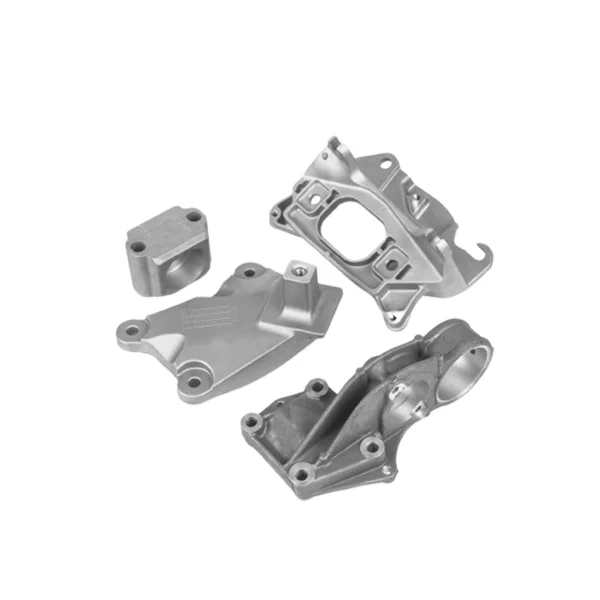- This topic is empty.
-
AuthorPosts
-
2025-07-17 at 5:10 pm #3994
Die casting has long been a cornerstone of automotive manufacturing due to its efficiency, durability, and ability to produce complex geometries at scale. However, as the automotive industry moves toward higher performance, safety, and energy efficiency, the demand for increased precision in die cast auto parts has grown dramatically. In this blog post, as a high quality automotive components manufacturing factory, Okin will share the improved precision of die casting auto parts for sale, the role of die casting in automotive manufacturing.
Role of Die Casting in Automotive Manufacturing
Die casting is a metal casting process characterized by forcing molten metal under high pressure into a mold cavity. The molds, also known as dies, are typically made of hardened tool steel and can be used to create parts with high dimensional accuracy, superior surface finishes, and intricate detailing.
In the automotive sector, die casting is widely used to produce components such as transmission cases, engine blocks, brackets, housings, and structural parts. These parts must meet strict tolerance requirements to ensure functional integration, long-term performance, and safety.
Why Precision Matters in Die Cast Auto Parts?
Precision in die casting is essential for several reasons:
* Dimensional Tolerances: High precision ensures that each part meets exact dimensional specifications, minimizing the need for post-processing.
* Assembly Fit: In multi-component systems, tight tolerances ensure proper fit and alignment, which is critical in automotive assemblies.
* Mechanical Performance: Precision casting helps maintain the mechanical integrity of parts by reducing internal stress and improving load distribution.
* Weight Optimization: In lightweighting strategies, precise control of wall thickness and structural geometry can reduce unnecessary mass without compromising strength.

Key Factors Influencing Die Cast Auto Parts Precision
Achieving high precision in die cast auto parts involves careful control over multiple variables. Key influencing factors include:
1. Tooling Design and Quality
The design and manufacture of dies play a decisive role in determining final part accuracy. Precision-ground dies with optimized flow channels, uniform cooling, and minimal thermal distortion allow for consistent, repeatable results. Advanced simulation software is used during the design stage to model molten metal flow, predict defects, and refine geometries for higher precision.
2. Material Selection and Alloy Consistency
High-quality aluminum, magnesium, and zinc alloys are preferred in automotive die casting due to their favorable strength-to-weight ratios and castability. Consistent alloy composition is critical; even minor variations in chemistry can affect solidification behavior, shrinkage, and dimensional stability. Automotive-grade alloys are often accompanied by strict material certification and quality checks.
3. Advanced Die Casting Machines
Modern die casting machines are equipped with precise control systems for temperature, pressure, and injection speed. These machines can monitor and adjust key process parameters in real-time, reducing human error and variability. Servo-hydraulic systems, multi-stage injection profiles, and adaptive feedback loops are now standard in high-precision die casting operations.
Process Enhancements for Greater Accuracy
To meet the growing demand for ultra-precise automotive components, manufacturers are adopting enhanced die casting processes, such as:
1. Vacuum Die Casting
Vacuum die casting removes air from the die cavity before metal injection. This reduces gas porosity, improves surface finish, and enhances dimensional accuracy. It is especially beneficial in thin-walled components where air entrapment can cause incomplete filling or deformation.
2. Squeeze Casting and Semi-Solid Casting
These hybrid techniques bridge the gap between traditional die casting and forging. By applying pressure during or after solidification, they minimize shrinkage and eliminate voids. Semi-solid casting also involves processing the metal in a slurry state, resulting in improved flow and reduced turbulence, thereby increasing dimensional precision.
3. Thermal Management and Die Cooling
Thermal imbalance can lead to warping, shrinkage, or dimensional drift. Die temperature control is achieved through integrated cooling channels, thermal cycling management, and thermal paste application. This ensures uniform heat distribution and more stable solidification patterns.
Measurement, Inspection, and Quality Assurance
The final stage in precision casting is verification. Automotive standards demand rigorous inspection using a combination of:
* Coordinate Measuring Machines (CMM) for high-resolution dimensional inspection.
* X-ray and CT Scanning to detect internal porosity or voids.
* Surface Profilometry to assess surface roughness and flatness.
* Inline Optical Measurement Systems for rapid, non-contact scanning in high-volume production environments.
These methods allow manufacturers to continuously monitor production quality, correct deviations early, and maintain compliance with ISO/TS 16949 and other automotive quality standards.
Conclusion:
As vehicles become more electrified, autonomous, and lightweight, the need for highly accurate and reliable components will only intensify. Precision die casting is evolving to meet these challenges through a combination of innovative tooling, advanced materials, process optimization, and digital integration.
The continued refinement of this manufacturing technique will not only ensure that auto parts meet strict safety and performance standards but also contribute to more sustainable and efficient production lines. Automotive manufacturers and suppliers who embrace these advancements in precision die casting will be well-positioned to lead in the competitive global market.
-
AuthorPosts
- You must be logged in to reply to this topic.
